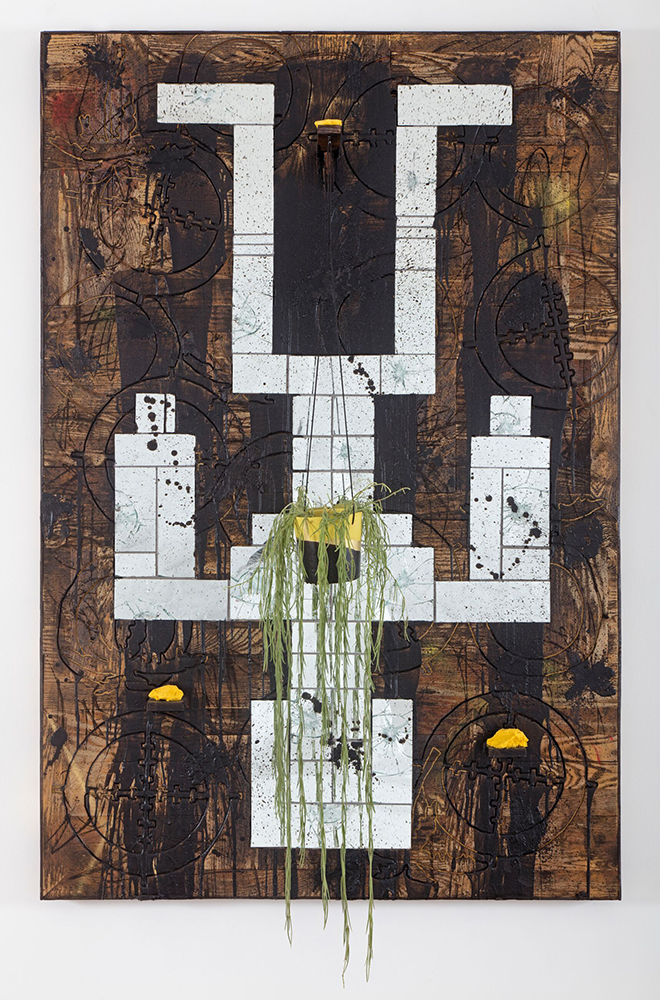New York-based artist Rashid Johnson explores history, cultural identities, and personal narratives through his wide-ranging, multidisciplinary practice. From his monumental pyramid sculptures to large-scale, wall-based mosaics, the artist integrates materials such as shea butter, red oak flooring, and black soap to expand abiding themes in his practice. These materials, drawn from specific autobiographical contexts, open to larger cultural associations related to race and class investigated in all of Johnson’s work. Johnson’s series of wall-based, Falling Man assemblages features the shape of an upside-down figure in ceramic or mirrored tile. The rudimentary form recalls the pixelated bodies of early video game characters falling after dying, or the chalk outlines of dead bodies at crime scenes in real life. In this work, the body is composed of individually cut pieces of mirror inset in a substrate of burned red oak flooring. Tellingly, sections of the mirrored body feature spider web-like cracks, mimicking the look of glass struck by bullets. The oak flooring is tarnished with black soap and seared with the target symbol that recurs in Johnson’s work. The target, like the body, is a symbol that moves between video games, especially the first-person shooter genre, and the real-life experience of gun violence. Falling Man also features three shelves stacked with shea butter, a frequently used material that is a callback to the Afro-centric leanings of Johnson’s parents, and a hanging house plant in a ceramic pot decorated by the artist, which like many of Johnson’s primary materials references domesticity. Here, the tumbling tendrils of the plant suggest the downward motion of the falling body. Johnson’s series can be seen as a prolonged investigation of the sense of anxiety connected with being a Black male in America, one in which the viewer is reflected in the mirror and therefore directly implicated.
